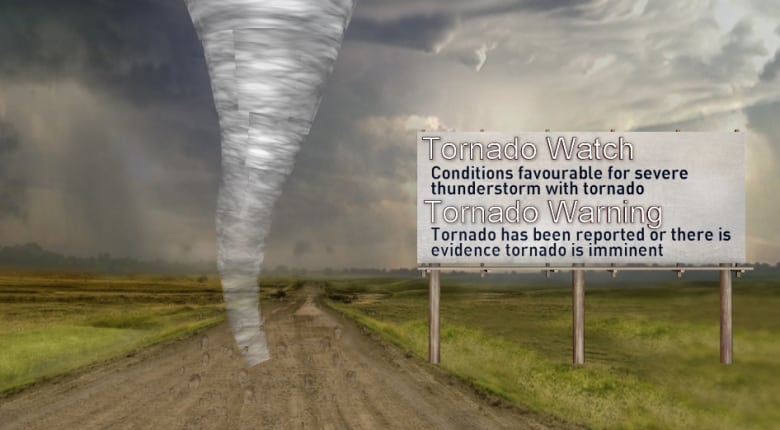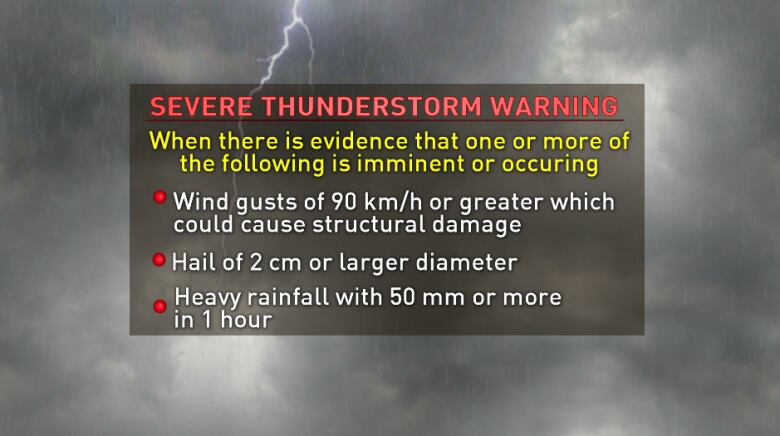What is the difference between a weather watch and warning?
Storm must meet specific criteria to warrant a 'warning'
Storm season is rolling in, which means the news will be dominated with weather advisories, watches and warnings.
Though theseterms all coverexceptional weather events, themeaning and severity of them is different.
What is a weather advisory?
Weather advisories can be used to cover a wide array of deteriorating weather conditions.
These bulletins are sometimes used to describeweather events that can be cause for public concern.
They also can be issued preceding watches and warnings as is the case with funnel cloud advisoriesor they can be issued to indicate severe weather in a long-term forecast.
What is a weather watch?
Watches are issued when there is the potential for severe weather.
When conditions favour that severe weather forming, a watch will be released to make the public aware of what could happen.
What is a weather warning?
A warning is the next step in the process.
Warnings are issued when that severe weather is actually occurring or is imminent.
As an example: Atornado watch would mean there is a good chance that a tornado will form in the affected area, whereas a tornado warning would mean a tornado is occurring or about to occurand those in theregion should take cover immediately.

What is the criteria?
There is a specific set of criteria a storm must reach to require the issuance of a warning.
In the winter, a blizzard warning is only issued when sustained winds of at least 40 km/h reduce visibility with blowing snow to 400 metres or less for at least four hours south of the tree line orsixhours north of the tree line.
This means that even if a winter storm rolls through with heavy snow and low visibility at times, it will not be classified as a blizzard until it hits that criteria.

The same sorts of criteria are used with summer weather warnings.
For instance, a severe thunderstorm watch will be issued if there is the potential for the development of a thunderstorm with either wind gusts of 90 km/h or greater, hail with a diameter of two centimetres or greater, or heavy rainfall (with 50 millimetres or more within one hour).
A warning would be issued if a cell was spotted on radar with one or more of those weather conditions occurring.

The criteria for these warnings vary throughout Canada and the United States, so warnings may be issued for certain areas and not others.













_(720p).jpg)


 OFFICIAL HD MUSIC VIDEO.jpg)
.jpg)



























































































